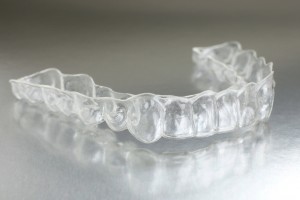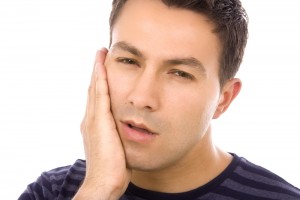
Anyone who has ever experienced a severe toothache will tell you that you do not want to neglect dental care until a tooth decays to the point of intense pain. Many will agree that a toothache is one of the worst types of pain that one can experience. A toothache tends to feel worse at night with dull, throbbing pain that seems to increase when one is lying in bed. While pain pills might relieve a toothache temporarily, the best remedy is to get rid of the decay that is causing the ache by filling the tooth or extracting it. However, if one takes a proactive approach, the ache can be prevented, and the tooth can be saved. If your dentist has told you that you need a filling, but you are not feeling any pain, there are some things you need to know about tooth decay.
Poor oral care leads to tooth decay. Neglecting brushing and flossing results in a tooth becoming exposed to acid producing bacteria. Tooth decay occurs as the acid and bacteria eat into the tooth. Initially these destructive bacteria can go unnoticed, so in the early stages of tooth decay; it is not unusual to experience no pain at all. However, as the decay persists a hole will appear in the affected tooth, allowing the nerves to be exposed. Exposed nerves bring pain. When the decay goes unchecked it can reach the point where the only relief is to extract the tooth. Continue reading →

A blow to the mouth can happen with enough force to cause a tooth to be knocked out of its socket. If a tooth gets knocked out by accident, it’s important to remain calm and follow a few simple steps to give yourself the best chance to permanently save the knocked out tooth. The first few minutes after a tooth becomes dislodged is the most critical period for saving it.
As soon as you discover that a tooth has been knocked out, take a deep breath and evaluate the amount of damage. Sometimes the tooth has merely been loosened but still remains partially attached to the socket. If that is the case, wash your hands and gently take hold of the tooth’s crown between two fingers in order to guide it back squarely into its socket. Apply a cold compress against your cheek or jaw to eliminate any swelling, then contact our office to request an emergency appointment so that we can do a thorough examination so see that no permanent damage has occurred. Continue reading →

Despite the recommendation that people visit their dentist twice a year, many adults instead choose to ignore this advice. They may develop a fear of going to the dentist or believe that they do not need regular dental care. If it has been a long time since you have visited the dentist, you may not be sure of what you need to do once you decide to make an appointment. The best approach to beginning regular dental care is to treat this visit as you would any other important medical appointment. Continue reading →

It is common for women to have questions about the potential risks of having dental procedures during pregnancy. Annual exams or a routine dental cleanings are completely safe procedures to have when you are pregnant. A woman’s body experiences an increase in the level of hormones during a pregnancy. This can cause the gums to bleed and swell. Food may become trapped causing an irritation to your gums. It is critical that a woman does not neglect preventative dental work during her pregnancy. Gum disease and other oral infections have been associated with premature births.
Regular dental work during a pregnancy
Crowns and cavity fillings should be taken care of during pregnancy. Having these procedures will reduce the possibility of infection. The second trimester is the ideal time to have these procedures done. Many women have problems lying on their back for a long period of time when they are in the third trimester. Continue reading →

What is Plaque?
Individuals with yellowed teeth may have a buildup of plaque. Plaque forms on tooth surfaces from deposits of bacteria. Scientific researchers have identified hundreds of species of bacteria that live in a human’s mouth. However, there are actually thousands of bacterial species that live in the human mouth. Dentists know that because teeth remain in the mouth for many years bacteria can easily cover dental surfaces. Regular brushing and flossing of teeth can prevent plaque from destroying tooth surfaces. In addition, proper dental hygiene assists in avoiding painful infections to tissues inside the mouth.
Dental Cavities
The sticky and yellow material on an individual’s teeth is actually biofilm. Biofilm is dangerous to the surfaces of teeth, gums, bones and ligaments inside the mouth. There are studies that reveal that dental plaque can cause additional health problems such as heart disease. Bacteria from plaque commonly cause cavities and gum disease in children, teenagers and adults. Tooth decay from plaque’s bacteria requires immediate treatment from a dental professional. Small cavities in teeth are easily repaired with color matching composite material by a dentist. Continue reading →

For many people, the thought of going to the dentist is enough to cause to them to grit their teeth. They would rather endure the pain of a toothache or risk tooth decay that step foot into the dentist’s office. However, sedation dentistry can take the fear out of the visit.
Maybe you are not necessarily afraid of the dentist but have another issue. You may have a low threshold for pain or extremely sensitive teeth. You may have a bad gag reflex that makes it difficult for the dentist to work. It may be that you have a lot of work that needs to be done that will be difficult to sit through for hours. The sedatives can make it easier on you and the dentist.
Sedation dentistry is the use of medication to help the patient relax during the procedure. It is sometimes called “sleep dentistry,” although that is not entirely accurate. The patients stay awake during the appointment, except those who are under general anesthesia for a surgery-like procedure. Continue reading →

When a tooth becomes infected down to the pulp, the dental patient has the choice of either a root canal procedure or an extraction. Leaving the condition untreated is dangerous, as the infection may spread into the rest of the body. The patient will quickly need to make a decision on how to proceed.
The Truth About Tooth Extraction
It is a common belief that having a tooth extracted is an acceptable alternative to having a root canal done. Extractions are faster, less complicated and do not cost as much as root canal procedures, but there are certain changes that may result from an extraction.
After a tooth has been removed, it leaves a space in the gums. This may cause the teeth around the space to shift into it, affecting the patient’s bite and possibly causing temporomandibular joint disorder. The remaining teeth may also become crooked and more likely to develop problems over the long term. Continue reading →

Dentists often are the first to notice the signs of bruxism in their patients. Bruxism is the grinding or gnashing of the back teeth either during the day or at night when asleep. Patients may suffer from other physical discomforts because of the clenching and grinding action. Bruxism can be treated in a number of ways to prevent further damage of the teeth.
Symptoms of Bruxism
The dentist may notice areas of worn, chipped or even fractured teeth. The patient may experience increased sensitivity of the teeth and gums. They may feel pain or tenderness in the jaw muscles. Tooth enamel may be worn down, exposing sensitive surfaces of the teeth. The patient may complain of headaches, face pain or earache from the excessive tension on jaw muscles. Often, the patient is aware of nighttime tooth grinding or may have been told about it by spouses or partners. Continue reading →











